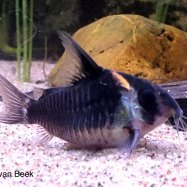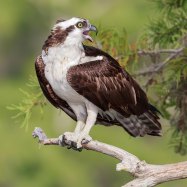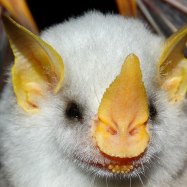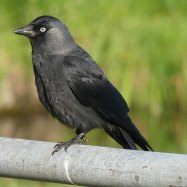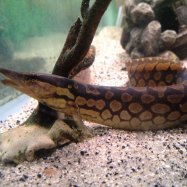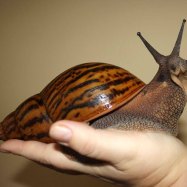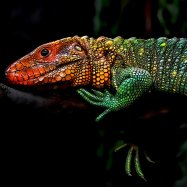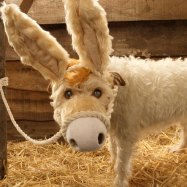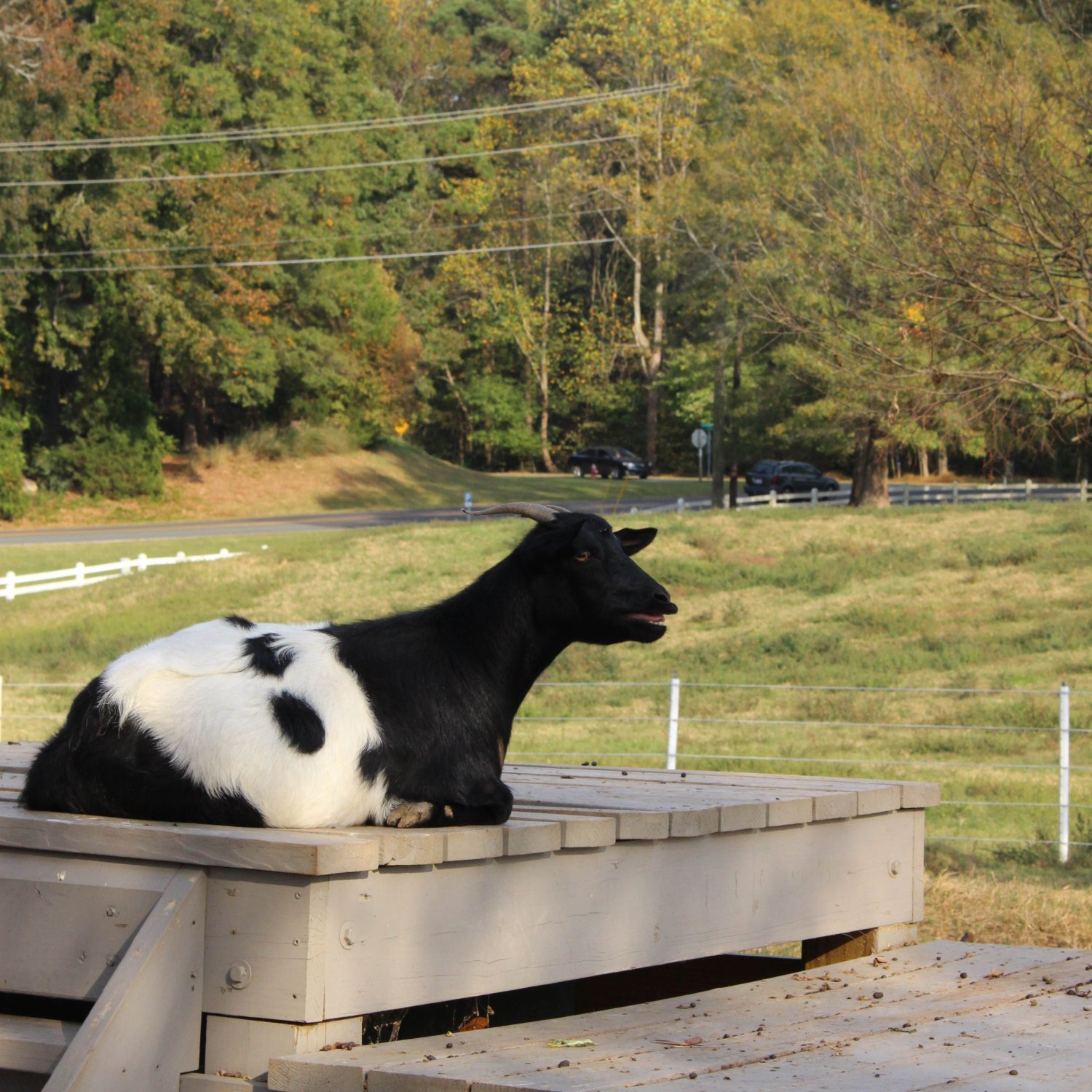
Fainting Goat
60-80 cm (24-31 inches)
Meet the Fainting Goat, a unique breed known for its tendency to fall over when startled. This medium-sized goat can be found worldwide and belongs to the Bovidae family. Standing at 60-80 cm, this muscular animal makes for a charming addition to any farm or petting zoo. #FaintingGoat #Bovidae #UniqueBreed #PettingZoo
Animal Details Summary:
Common Name: Fainting Goat
Kingdom: Animalia
Habitat: Grasslands, meadows, and open woodlands
The Unique Fainting Goat: Small in Size, Big in Personality
The world of animals is filled with curiosities, with each species having its own unique characteristics and behaviors. But if there's one creature that stands out as both fascinating and amusing, it's the Fainting Goat.Yes, you read that right – a goat that faints. These small, medium-sized creatures have captured the hearts of many with their peculiar condition, making them popular not just among farmers but also curious animal enthusiasts Fainting Goat. But aside from their trademark "fainting," there is so much more to learn and appreciate about this one-of-a-kind animal.
So sit back, relax, and let's delve into the world of the Fainting Goat – an animal that may be small in size, but definitely big in personality.
The Basics: Scientific and Common Name
Before we dive into the fascinating features of this animal, let's start with the basics – the Fainting Goat's scientific and common name. The scientific name for this unique animal is Capra aegagrus hircus, with Capra meaning "goat" in Latin, aegagrus from the Greek word "aegagros" which means "wild goat," and hircus meaning "he-goat."The common name for this animal is, of course, the Fainting Goat. This name is derived from their condition of muscle stiffness and fainting upon experiencing sudden fear or surprise.
The Taxonomy of the Fainting Goat
The Fainting Goat belongs to the Animalia kingdom, which comprises all animals. Its phylum is Chordata, which includes animals with a backbone or spinal cord. Next is the class Mammalia, which includes animals that have hair, produce milk to feed their young, and have a four-chambered heart Fisher.In terms of order, the Fainting Goat falls under the Artiodactyla order, which includes even-toed hoofed mammals such as deer, pigs, and sheep. Its family is Bovidae, which includes ruminant mammals such as cattle, sheep, and goats.
Habitat and Geographical Distribution
Now that we've established the basic information about this animal, let's take a look at where they can be found. Fainting Goats are native to the United States, specifically in Tennessee, where they were first discovered in the 1880s. They can also be found in other parts of North America, such as Canada, and have also been introduced to Europe.These unique goats thrive in a variety of habitats, from grasslands to meadows and open woodlands. They are adaptable creatures, making them suitable for different environments and climates.
Feeding Method
Being herbivores, Fainting Goats primarily feed on plants, such as grass, leaves, and shrubs. They are known to be browsers, meaning they prefer to nibble on a variety of leaves and shrubs rather than grazing in one area for an extended period. This feeding habit also helps prevent overgrazing in their habitat.An Interesting Quirk: Fainting
One of the most talked-about features of the Fainting Goat is, of course, their tendency to faint. This condition, known as myotonia congenita, causes their muscles to stiffen when startled or excited, leading to a brief fainting spell. This is due to a genetic mutation that affects the sodium channels in their muscles.Despite the name, these goats do not lose consciousness, but rather experience a short period of stiffening and muscle contraction. This usually lasts for a few seconds before they return to normal.
This unique trait has made the Fainting Goat popular among farmers and breeders, as well as in the entertainment industry. They are even featured in viral videos, showcasing their fainting abilities, garnering millions of views and followers.
Physical Features
Aside from their fainting trait, the Fainting Goat has other interesting physical features that make them stand out. They have a medium-sized body, ranging from 60-80 cm in length and weighing between 27-55 kg. Their compact, muscular build makes them perfect for farm work and handling.In terms of color, these goats come in various shades, including black, white, brown, and gray. Some also have distinctive patterns on their coats, adding to their unique appearance.
Farm Animals with Personality
Aside from their amusing fainting episodes, Fainting Goats are known for their friendly and sociable nature. They enjoy interacting with humans and have a playful and curious personality. Although they are classified as livestock and are primarily bred for their meat and milk, they have become popular as pets due to their lovable and docile demeanor.Easy to Manage and Low Maintenance
Another appealing feature of the Fainting Goat is that they are relatively easy to manage and maintain. They are hardy animals and are known to have a strong immune system, making them less susceptible to diseases. They also require minimal grooming and are known to be excellent foragers, making them low maintenance animals.Breeding and Conservation Efforts
Fainting Goats have a relatively short gestation period of approximately five months, and females usually give birth to two or three kids at a time. Due to their small size and docile nature, breeding and caring for these goats are relatively easy, making them a popular choice among farmers.However, despite their popularity, Fainting Goats are considered a rare breed. This is due to their susceptibility to predators, such as dogs and coyotes, as well as their limited geographical distribution. To preserve and promote this unique breed, conservation efforts are being made by dedicated breeders and organizations that focus on rare and endangered livestock.
In Conclusion
In a world where animals with peculiar and unique traits are constantly being discovered, it's no wonder the Fainting Goat has captured the attention and hearts of many. From their amusing fainting episodes to their friendly and sociable nature, there is so much to appreciate about this small but mighty creature.Despite their rarity and limited geographical distribution, their popularity continues to grow, thanks to their undeniable charm and easy maintenance. So if you ever come across a fainting goat, take a moment to appreciate this tiny but remarkable animal that has captured the curiosity of many.

Fainting Goat
Animal Details Fainting Goat - Scientific Name: Capra aegagrus hircus
- Category: Animals F
- Scientific Name: Capra aegagrus hircus
- Common Name: Fainting Goat
- Kingdom: Animalia
- Phylum: Chordata
- Class: Mammalia
- Order: Artiodactyla
- Family: Bovidae
- Habitat: Grasslands, meadows, and open woodlands
- Feeding Method: Herbivore
- Geographical Distribution: United States, Canada, and Europe
- Country of Origin: United States
- Location: Worldwide
- Animal Coloration: Various colors including black, white, brown, and gray
- Body Shape: Medium-sized with a muscular build
- Length: 60-80 cm (24-31 inches)
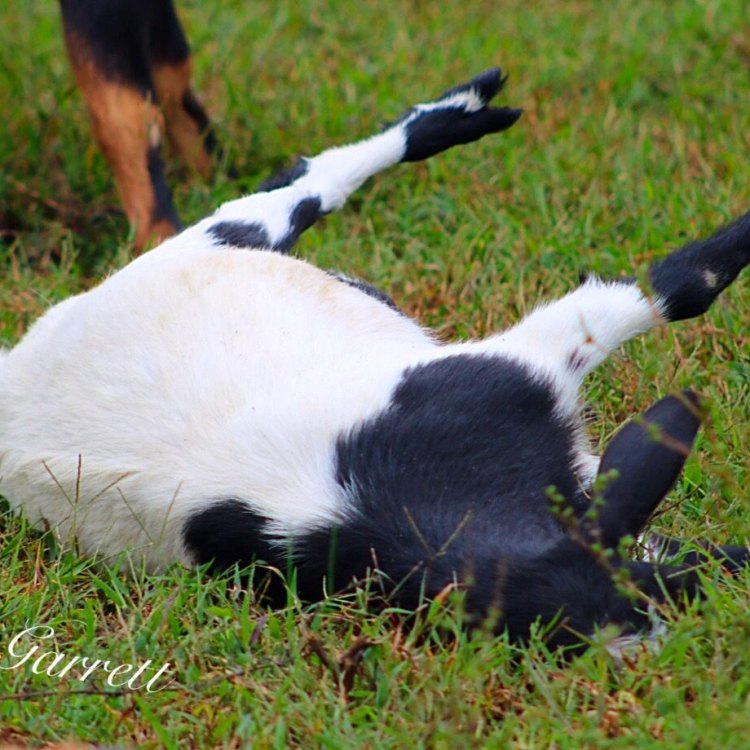
Fainting Goat
- Adult Size: Medium-sized
- Average Lifespan: 10-12 years
- Reproduction: Sexual
- Reproductive Behavior: Polygynous
- Sound or Call: Various vocalizations including bleats and calls
- Migration Pattern: Non-migratory
- Social Groups: Herds
- Behavior: Curious, calm, and friendly
- Threats: Predation and habitat loss
- Conservation Status: Not listed
- Impact on Ecosystem: Can help manage vegetation in certain regions
- Human Use: Meat, milk, and fiber (wool)
- Distinctive Features: Goats that faint and fall over when startled
- Interesting Facts: Fainting goats have a genetic condition called myotonia that causes their muscles to stiffen when they are startled or excited, leading to temporary paralysis.
- Predator: Coyotes, wolves, and dogs
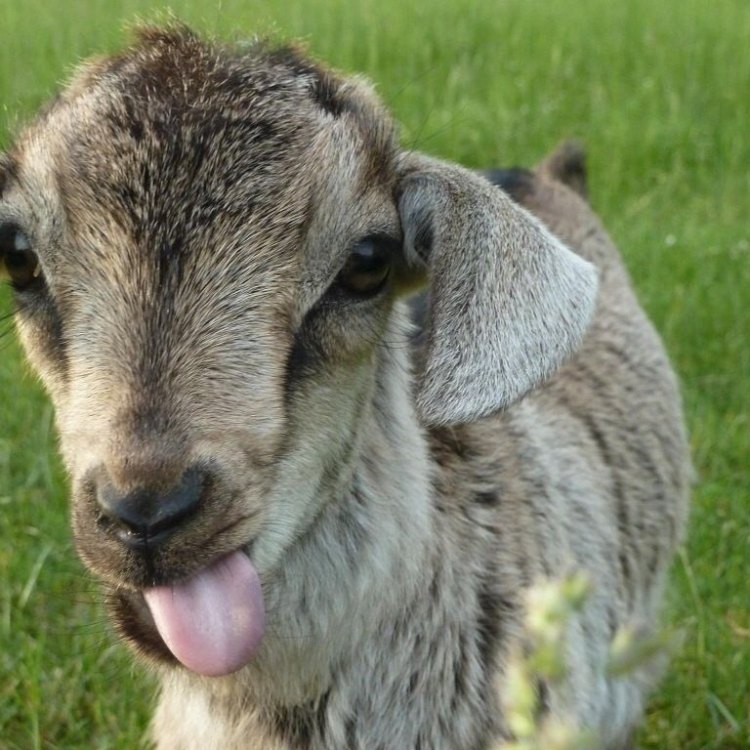
Capra aegagrus hircus
The Medium-Sized Fainting Goat
Fainting goats are a cross between domestic and wild goats and are considered medium-sized. They can range from 17 to 25 inches tall and weigh between 60 and 174 pounds, making them slightly smaller than traditional domesticated goat breeds.Their size makes them easy to handle and transport, making them a popular choice for small farms and homesteads. They are also well-adapted to a variety of climates, making them a versatile choice for farmers and breeders PeaceOfAnimals.Com.
Living for 10-12 Years
On average, fainting goats have a lifespan of 10-12 years. However, with proper care and nutrition, some goats have been known to live up to 15 years. Their lifespan is comparable to other domesticated goat breeds and is heavily dependent on their living conditions and overall health.As with any animal, providing proper nutrition, shelter, and medical care is essential to ensure a long and healthy life for fainting goats.
Reproductive Behavior: Polygynous
Fainting goats, like most goats, are sexual reproducers. This means that they reproduce through mating and giving birth to live offspring. However, unlike other breeds of goats, fainting goats are polygynous, meaning that males mate with multiple females within a breeding season.In a herd of fainting goats, there are usually several males and multiple females, with the males competing for mating opportunities. The dominant males will mate with multiple females, while the less dominant males may not mate at all Flamingo.
Once the female gives birth, it takes about 4 months for the kid to reach maturity and be ready to breed, making fainting goats a reasonably fast-breeding species.
The Social Life of Fainting Goats
Fainting goats are social animals and are often found in herds. These herds consist of a dominant male, his harem of females, and their offspring. Goats are very social creatures and enjoy living in groups, which allows them to communicate, play, and establish social hierarchies.As social animals, fainting goats have a particular behavior that sets them apart from other goats. When startled or excited, the goats experience a sudden stiffening of their muscles, causing them to fall over for a brief period. This behavior is believed to be a defense mechanism that helps protect the herd from predators.
Curiosity, Calmness, and Friendliness
Despite their unusual behavior, fainting goats are calm and friendly animals. They are known for their curiosity and will often approach strangers with their distinctive bleats and calls, making them a popular choice for petting zoos and animal-assistance programs.They are also relatively calm and easy to handle, which makes them suitable for first-time goat owners. However, it is important to note that they still require proper training and care, like any other domesticated animal.
Threats and Conservation Status
Like many animals, fainting goats must face threats to their survival. The primary threats for these goats are predation and habitat loss. Coyotes, wolves, and dogs are natural predators for fainting goats, and their encroachment on natural habitats has put these animals at risk.However, despite these threats, fainting goats are not currently listed as a species of concern or endangered. They are widely bred in captivity, and there are many efforts to conserve and protect their natural habitat.
As with any animal, individuals have a role to play in protecting this unique species by being mindful of their impact on the environment and supporting conservation efforts.
The Impact of Fainting Goats on Ecosystems
You may be wondering, "What impact does a goat that faints have on the environment?" Well, as it turns out, fainting goats have a specific niche in certain habitats and can have a positive impact on the ecosystem.Fainting goats are known for their ability to efficiently manage vegetation in designated areas. They do this by grazing and pruning plants, which helps to promote healthier plant growth. This is particularly useful in regions where overgrown vegetation can create issues, such as blocking roadways or posing a fire hazard.
The breed's foraging behavior helps balance the ecosystem and maintain biodiversity. By keeping plant populations in check and promoting healthier growth, fainting goats play a crucial role in maintaining healthy ecosystems.
Human Use of Fainting Goats
As with many domesticated animals, humans have found various uses for fainting goats. They are often kept as pets or used for their meat, milk, and wool.Their meat is considered lean and flavorful, and many farmers choose to raise fainting goats for this purpose. Additionally, their milk is high in protein and can be used to make cheese and other dairy products. The wool from their coats is also desirable and can be used for yarn and other fiber products.
However, it is important to note that if you are considering raising fainting goats for human consumption, it is essential to prioritize the animal's welfare and provide them with proper care and living conditions.
The Distinctive Feature of Fainting Goats
Of course, the most famous and distinctive feature of the fainting goat is their ability to faint and fall over when startled or excited. This unique behavior is caused by a genetic condition called myotonia, which affects the functioning of the goat's muscles.When a fainting goat becomes startled, their muscles suddenly stiffen, causing them to fall over. This stiffness only lasts for a few seconds before the goat is back on its feet, unharmed and unbothered by the experience.
This genetic condition is what makes fainting goats such a unique and fascinating breed, popular among breeders and animal lovers alike.
Final Thoughts
The fainting goat may have a funny and uncommon behavior, but they are a real and fascinating animal with many unique features. They are medium-sized, have a lifespan of 10-12 years, are social animals, and have a genetic condition that makes their muscles stiffen and causes them to faint, making them one of a kind.While their behavior may make them seem comical, fainting goats should be treated with the same care and respect as any other domesticated animal. By learning more about these interesting creatures, we can appreciate and support their conservation and protection.
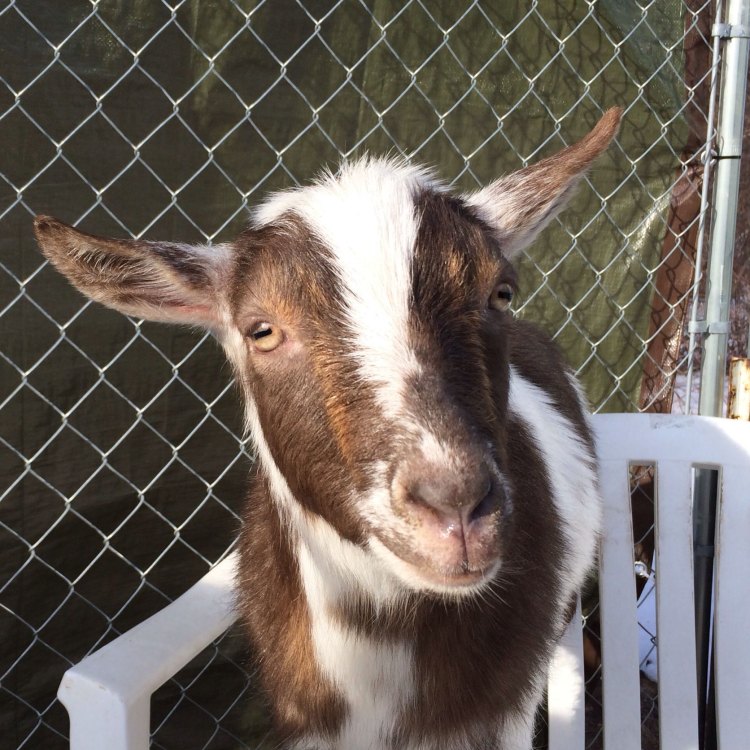
The Unique Fainting Goat: Small in Size, Big in Personality
Disclaimer: The content provided is for informational purposes only. We cannot guarantee the accuracy of the information on this page 100%. All information provided here may change without prior notice.


